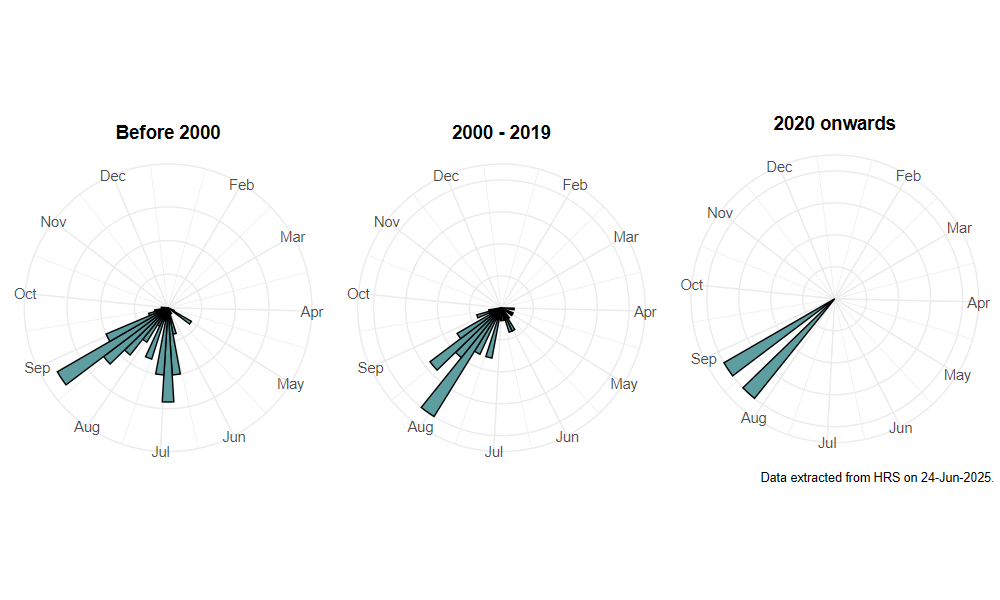Cheilosia cynocephala Loew, 1840
Identification
Identification difficulty = 4. ![]()
![]() according to Ball & Morris, 20241
according to Ball & Morris, 20241
Biology
The larva tunnels the stems of Musk Thistles Carduus nutans but an association with Welted Thistle C. crispus has also been noted in Warwickshire. Adults are usually found in unimproved calcareous grassland where the larval food plant occurs, often near rivers, streams or flushes. Adults fly low amongst the vegetation and visit a range of flowers including white umbels and yellow composites.
Flight period
The following plots show the number of unique records per week excluding those reported to be of immature stages.

Status
Lower Risk (Nationalls scarce) - Ball & Morris, 20142. Notable - Falk, 19913. Rare (RDB3) - Shirt, 19874.
Distribution
The distribution of this species mainly follows the Chalk and limestone from East Anglia to the Mendips. Records are somewhat concentrated towards the south-west (Dorset, Somerset & Wiltshire), with few records from the chalk of south-east England, despite this being a relatively well-recorded area. There are thinly scattered records from Wales and northern England, and two localities in Scotland, near Edinburgh.

Trends
The following plots show the Frescalo TFactor vs year and a map of the rescaled frequency (all records) for the species.
-
Ball, S., & Morris, R. (2024). Hoverflies of Britain and Ireland. WILDGuides (3rd ed.). Oxford: Princeton University Press. ↩
-
Ball, S., & Morris, R. (2014). A review of the scarce and threatened flies of Great Britain. Part 6: Syrphidae. ( No. 9). Species status (pp. 1–130). Peterborough: JNCC. ↩
-
Falk, S. (1991). A review of the scarce and threatened flies of Great Britain. ( No. 39). Research and Survey in Nature Conservation (pp. 1–194). Peterborough: NCC. ↩
-
Shirt, D. (Ed.). (1987). Red Data Books: 2. Insects. Peterborough: NCC. ↩